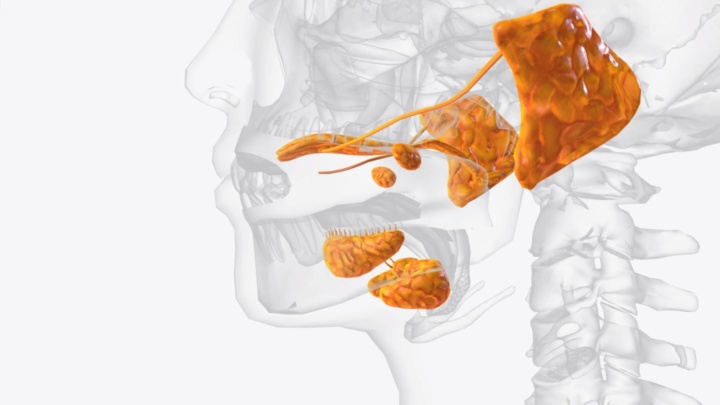Salivary Gland Ultrasound

What is a salivary gland ultrasound?
A salivary gland ultrasound is a diagnostic procedure used to examine the salivary glands using ultrasound waves. This procedure allows doctors to assess the size, shape, structure, and function of the salivary glands.
It is typically performed using an ultrasound device that employs high-frequency sound waves to create images within the body. The procedure is non-invasive, painless, and does not require any special preparation from the patient.
Salivary gland ultrasound can be used to diagnose various conditions, including inflammation, infections, salivary gland stones, cysts, and tumors. It can also be used to monitor the progress of a disease and the effectiveness of treatment.
Contact us with confidence
SEND INQUIRYWhat are salivary glands?
Salivary glands (lat. glandulae salivariae) are exocrine digestive glands located around the mouth and throat. They produce saliva and secrete it into the mouth. Saliva is constantly secreted in small amounts to keep the mouth moist and in larger amounts during eating to facilitate further transport and initiate chemical digestion of food. There are three major salivary glands in the mouth:
- Parotid gland: Located below and in front of the ear, it secretes saliva into the mouth via the parotid duct from the upper side.
- Submandibular gland: Located beneath the lower jaw, it secretes saliva through a duct at the floor of the mouth.
- Sublingual gland: Located beneath the tongue, it functions from the underside of the mouth.
In addition to moistening the mouth, salivary glands produce the enzyme amylase (also known as ptyalin) and lubricate the esophagus to aid in food transportation to the stomach.
Who are candidates for a salivary gland ultrasound?
Candidates for a salivary gland ultrasound include individuals experiencing symptoms such as swelling or pain in the area of the salivary glands. It is important to consult a doctor, who will assess the need for a salivary gland ultrasound or other diagnostic tests.
The ultrasound is a simple, non-invasive, and harmless method that is relatively easy to repeat and provides a quick view of the salivary glands’ morphology. and provides a quick view of the salivary glands’ morphology.
Preparation for a salivary gland ultrasound
Generally, no special preparation is required for a salivary gland ultrasound. However, it is important to inform your doctor about any medications you are currently taking and any health conditions you have.
To ensure the best possible image, the salivary glands should be as uninflamed as possible. Therefore, if you have swelling issues, it may be beneficial to reduce your salt intake and drink enough fluids to maintain hydration. Additionally, avoid eating or drinking several hours before the exam to ensure the salivary glands are in a resting state.
Before the exam, you may need to remove jewelry and other metal objects from the area being examined and wear clothing provided by the healthcare professional during the procedure.
In general, no special diet or preparation is needed before a salivary gland ultrasound, but it is important to follow your doctor’s or healthcare provider’s instructions to ensure the best possible imaging and diagnostic accuracy.
How is a salivary gland ultrasound performed?
A salivary gland ultrasound is a non-invasive medical procedure used to visualize and assess the condition of the salivary glands using high-frequency sound waves.
It is usually performed with a small, handheld probe gently placed on the skin over the salivary glands. During the procedure, the probe emits sound waves through the skin, which then bounce off the salivary glands and return to the probe.
The ultrasound allows visualization of the salivary glands’ structure and assessment of any changes in their shape, size, or texture. It is commonly used to diagnose issues such as salivary gland stones, tumors, inflammation, or other abnormalities.
This is a safe and non-invasive procedure that typically takes about 15-30 minutes. After the procedure, you will likely receive a detailed report on the condition of your salivary glands, which will help in further treatment.
Cost of a salivary gland ultrasound
You can check the current price list of the Sinteza Polyclinic for more information on the cost of the procedure, contact us by phone at +385 1 5005 970 or via email at info@sinteza.hr for more information. For direct appointment reservations, click on the link.
Service location
- For 16 years, the first choice for our clientsSinteza - Folnegovićeva


